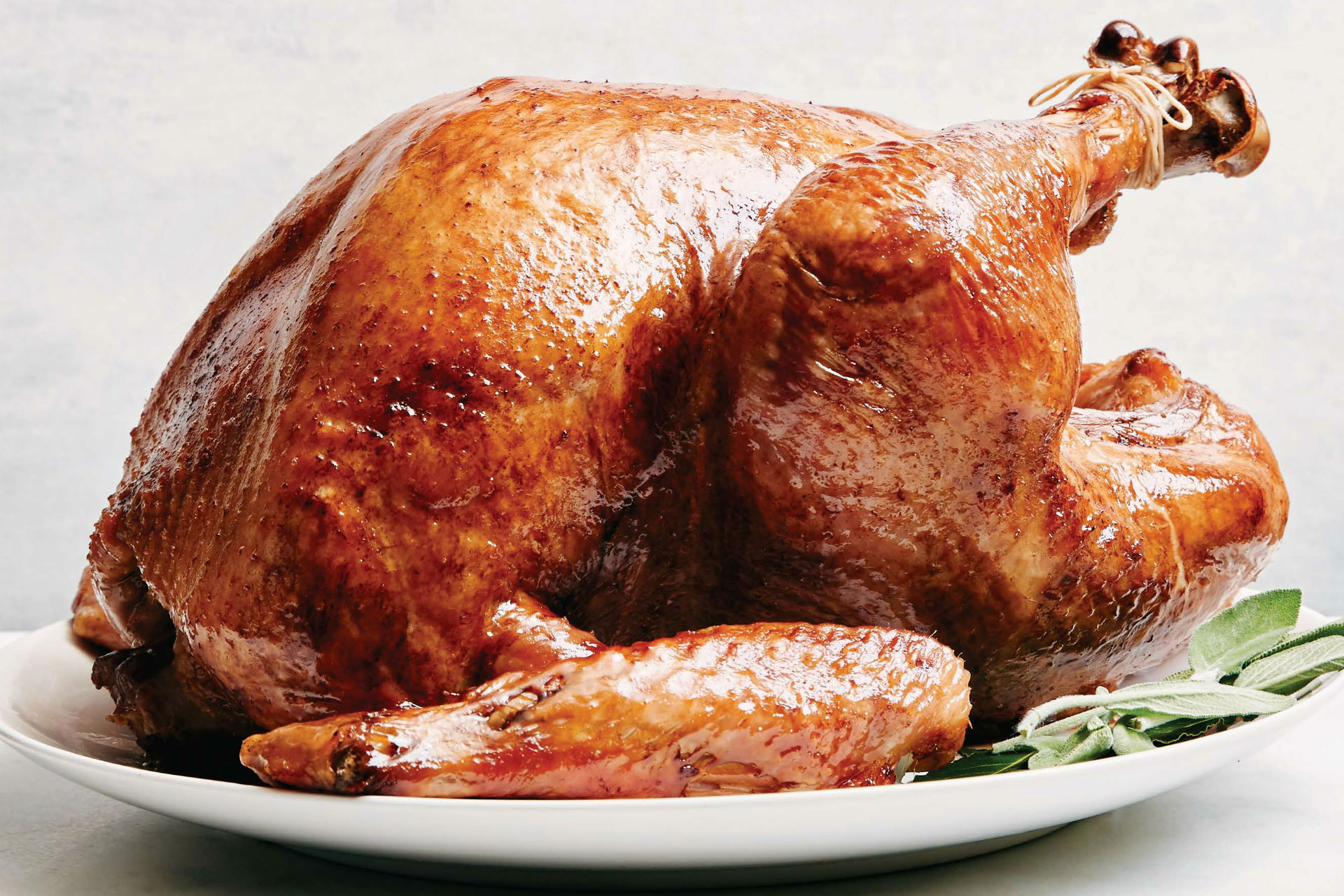Food
3 min Read
Dry-Brined Turkey

April 6, 2020
Food
3 min Read

April 6, 2020

I’ve never understood exactly why brining works so well on roast turkey, but it really does make it more moist and flavourful. What I do understand, and what stays with me, is the reaction I get from guests when I serve this bird. Hands-down, it’s the best turkey they’ve ever eaten. It’s turkey magic. This roast also looks spectacular, and is always the centrepiece of my table. Dry-brining is much less complicated than wet-brining since you don’t need a vessel in which to submerge a turkey and keep it cold. It is absolutely critical that you use kosher salt for this, preferably Diamond Crystal. Regular salt is too fine and will permeate the fibres of the turkey, ruining everything.
Prep time: 20 minutes
Total time: Ready in about 27 hours
Serves: 8-10
3 cups packed brown sugar
1 1/2 cups kosher salt
1 fresh turkey (13 to 15 pounds/6 to 7 kg)
1 bunch fresh thyme, parsley or sage, or a combination
3 tbsp canola oil
Combine brown sugar with kosher salt in a medium bowl. Place the turkey in a large plastic bag (I use a grocery bag, checking first that it has no holes) and place the bag in a roasting pan.
Pack the sugar mixture all over the breast, legs and wings of the turkey, pressing firmly so as much of the mix sticks as possible. Carefully close up the bag, just for neatness, then pop it into the fridge (or a room that is colder than 39°F/4°C but above freezing) for 24 to 36 hours.
About 4 hours before you want to sit down for supper, preheat the oven to 325°F. Take the turkey out of the bag and rinse it under cold running water, gently rubbing it until every last speck of the brining mixture comes off. Don’t forget to rinse out the inside, too.
Place the turkey on a rack in a roasting pan and dry it with paper towels. Place the thyme in the cavity and tie the legs together with twine. Bend and tuck the wing tips under the back. Brush the turkey all over with the canola oil..
Roast 3 to 31⁄2 hours or until a thermometer inserted into the thickest part of the thigh reads 175°F. Transfer the turkey to a carving board and tent loosely with foil. Let rest at least 30 minutes and as much as an hour before.
Resting meat of any size, but especially large roasts, is arguably the most important step. During its rest, the meat’s juices will redistribute themselves and make the meat juicy and flavourful. It will also be easier to carve. The roast will cool down a little, but not enough to notice.
Save those bones and use them to make chicken stock.
Originally published in the Winter 2018 issue. Used with permission from Uncomplicated by Claire Tansey. Photo by Maya Visnyei.